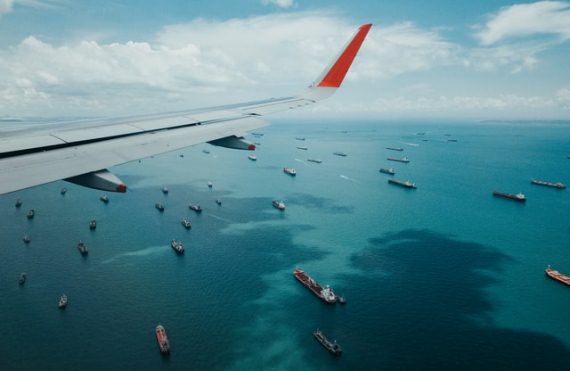- Shippers and importers continue to pay all-time high premium prices on the Asia-US lane in order to get urgent cargo moving in time for the holiday season
- On the Asia-Europe trade, space and equipment crunches continue and rates have skyrocketed as market demand exceeds supply
- In the Asian airfreight market, demand is increasing significantly, and many ocean-to-air conversions are driving prices still further up
Congestion has returned to peak severity on the trans-Pacific eastbound lane as seen at the port area of Los Angeles/Long Beach, where some 70 or more container ships were at anchor last week, awaiting berthing space, according to the latest ocean freight market update from Flexport.
The report noted that shippers and importers continue to pay all-time- high premium prices on the Asia-US lane in order to get urgent cargo moving in time for the holiday season. Labor strains, blank sailings, and Covid-19-related disruptions to supply are expected to continue to place additional pressure on capacity in coming months.
Flexport, a US-based freight forwarding and customs brokerage company, said the September 15 general rate increase (GRI) has been implemented by most carriers.
On space availability, this remains at “critical” level, while capacity/equipment on this key trade lane remains at “severe undercapacity” level.
The report recommended that shippers continue to book well in advance (at least four to six weeks) prior to CRD (cargo ready date) and to encourage suppliers to support departures from different origin ports. Consider terminating cargo at destination coastal ports to prevent intermodal delays, it added.
As to the Asia-Europe trade (Far East westbound), space and equipment crunches continue, said Flexport.
“Market demand exceeds supply as rates have skyrocketed. There is some talk by carriers about stopping spot rate increases, but it is not yet clear how this will play out. Overall space situation is worsened by blank sailings and poor equipment availability. Carriers are overcommitted and are limiting booking acceptance or rolling shipments. With continuous vessel delays and shiftings, schedule reliability remains very low,” said the update.
Rates on this trade lane remain at a record-high level but are stable going into September. They may increase further due to upcoming Golden Week blank sailings. Space situation is in “extremely critical,” and there is severe equipment shortage across all Asia origins.
“Recommendation is to book at least 4 to 5 weeks prior to CRD. Consider premium options, which may be limited. Be flexible in regard to equipment,” the report advised.
Meanwhile, on the airfreight market situation in Asia, here are the latest updates from Flexport:
- Northern China: Although the Shanghai Pudong International Airport’s (PVG) handling capability is improving and freighter and passenger freighters are coming back, the market is still very constrained ex-PVG. Airlines are still trying to clear the backlog caused by Typhoon Chanthu. Lead time from booking to uplift is approximately four to six or more days, possibly more for skidded cargo. The China Golden Week holiday runs from October 1 to October 7.
- Southern China: Demand is strong due to end-of-quarter timing, while supply is not increasing. Many ocean-to-air conversions are driving prices still further up.
- Taiwan: Trans-Pacific eastbound market capacity is fully booked. For loose cartons/high density cargo, it is still possible to secure some capacity in the spot market this week, though at very elevated rates.
- Southeast Asia: Demand for airfreight is increasing significantly and rates are going up on a daily basis as factories in Northern Vietnam run at full speed to clear backlogged orders from the third quarter. Ocean-to-air conversions are picking up as there is no available ocean space for cargo to still make it in time for the US holiday season.
Photo by @shawnanggg on Unsplash





